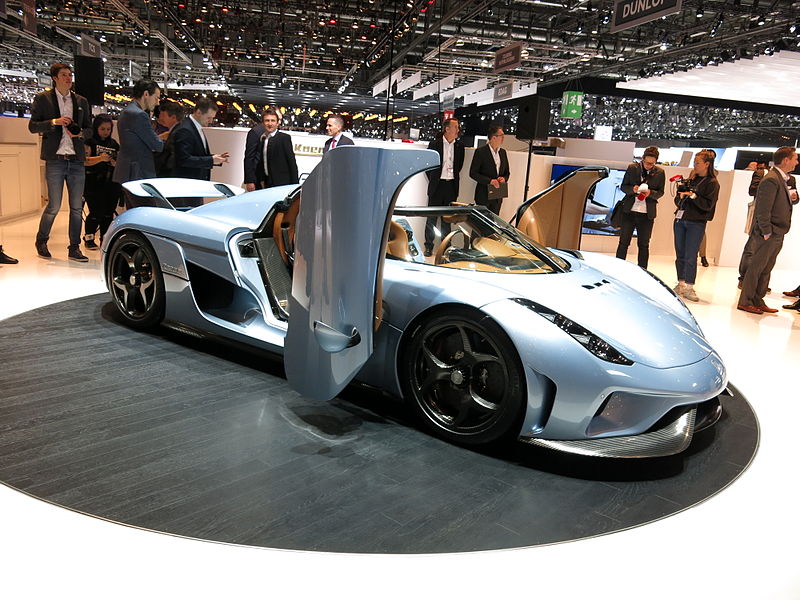 |
| Source: roadandtrack.com |
Listening to the Prancing Horse roaring past with atmospheric pressure, only to be met with different tone, a tone that may cringe the naturally aspirated engine enthusiasts. Yes folks, The Prancing Horse has gone the route that the world is currently heading to: the trend of downsizing engine and slapping on a (gasp!) turbocharger. Newer models such as the California T has gone the turbocharging route, making it the first turbocharged Ferrari since the scintillating 2.9L twin turbo V8 F40. Next to follow California T in the realm of force induction is the 458 replacement, the 488 GTB.
Yep, you heard it right. Ferrari essentially took the F136 4.5L V8 from the 458 and reduced its displacement to 3.9L, adding on twin turbo to claw back the power deficit. Hence you have the F154 3.9L twin turbo V8 that makes 661 horsepower and 760 Nm of torque. Its predecessor made 562 horsepower on the Italia and 597 horsepower on the Speciale, and 540 Nm of torque, an increase in 99 horsepower (up by 64 horsepower from the Speciale) and 220 Nm of torque!
The trend of using a small displacement engine and slapping on a turbo has enabled manufacturers to meet tough emission requirement while sustaining respectable power output. Top Gear compared the fuel economy and CO2 emission figure between the 488 GTB and the 2004 Ferrari 430. The former net 25 mpg and emit 260 g/km of CO2, while the latter net 18 mpg and 345 g/km of CO2. The effect of turbocharging on power is obvious but how does it contribute to lower fuel consumption and CO2 emission?
In general, smaller engines are more efficient than larger engines due to lower internal friction from lower cylinder count and less inertial forces (shorter piston stroke and smaller piston). With that in mind, more of the power extracted from the burned air-fuel mixture is converted into useful energy to get the car down the road instead of being wasted as heat. Therefore, less fuel can be theoretically burned to make the same power. Also with less fuel burned, less CO2 is ejected down the exhaust pipe. In light of tighter emission, automakers are forced to downsize the engine which in general comes at the expense of power. In response, manufacturers slap on turbochargers to bring up the power figure.
 |
| Source: carscoops.com |
 |
| Source: carscoops.com |
Now, if you're interested in the specifics, the 488 GTB is powered by Ferrari's F154 3.9L twin turbo direct injected flat-plane V8 mid-mounted engine, channeling its raw power to the rear wheels. The turbo is a twin scroll type from IHI to ensure smooth exhaust flow and cut turbo lag. Also, the turbo's compressor wheel is made of titanium-aluminium alloy to further cut lag, and spins on ball bearing shaft to further cut lag and reduce friction. Lubrication will be taken care of by an all-aluminium dry sump, while keeping the turbocharged air cool are 2 air-to-air intercooler.
Paired up to the V8 is a 7 speed dual clutch transmission sourced from Getrag.
Stopping task is taken care of by carbon ceramic brakes with 398mm front disc and 360mm rear disc, surrounded by 5-spoke 20" alloy wheels with 245/35 tyres up front and 305/30 tyres at the rear.
Handling also receives further boost, thanks to SSC2 (Side Slipangle Control 2), an enhanced version of the clever SSC introduced on the 458 Speciale, that combines F1-Trac (Traction Control) and E-Diff (Electronic Differential) with the adaptive magnetic damper to make a drift hero out of Joe Schmoe.
Further boosting its handling is the aerodynamics. In between the 2 large lower air intakes (see the top picture) are Ferrari's so-called 'Aero Pillar' that directs air underneath the car to lower the pressure underneath, which helps boost downforce. At the rear, downforce is further increased thanks to the diffuser with active flaps that precisely adapt the diffuser's ramp angle in response to changes in speed.
In case if you are interested in buying this beast, Naza Italia, Ferrari's distributor in Malaysia, has launched it since last month at a base price of RM1,068,800 (excluding taxes and optional features).
